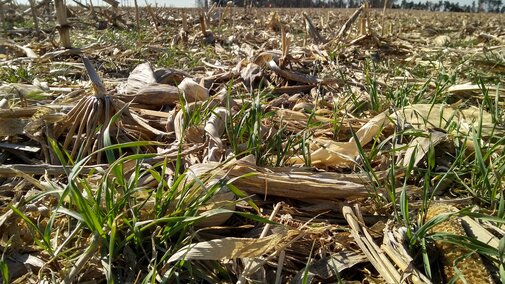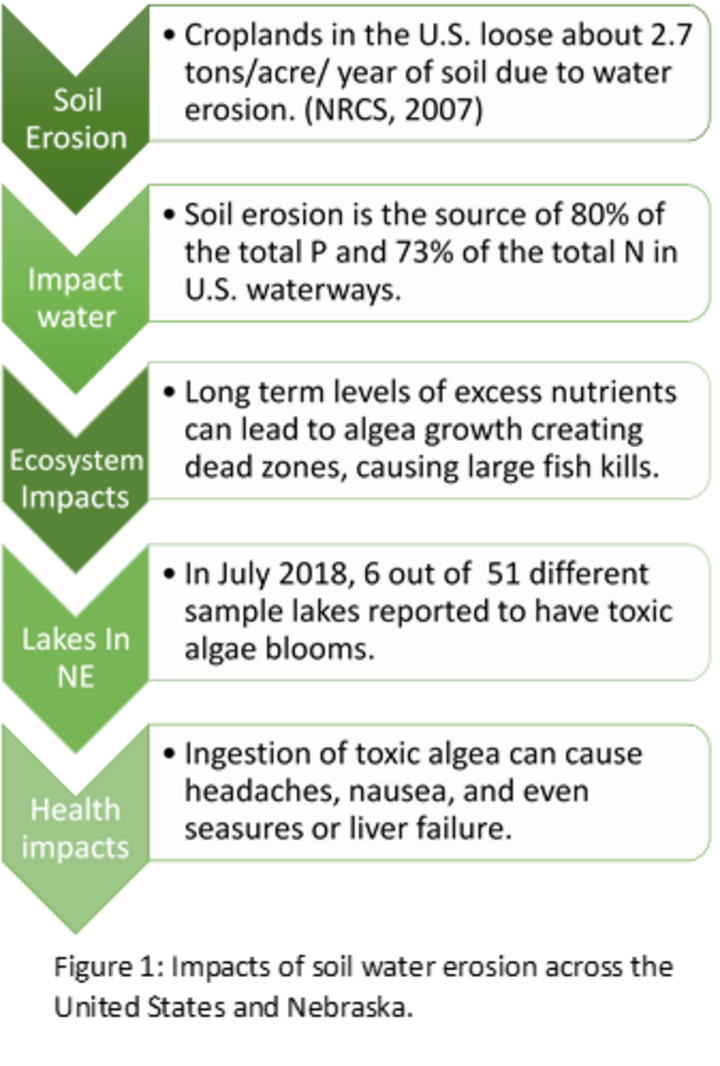
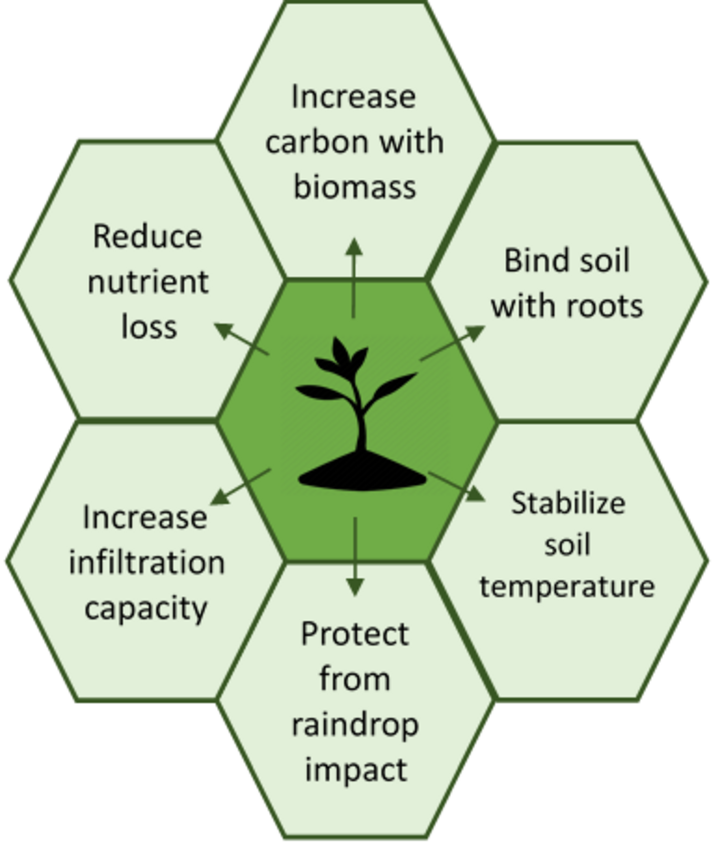
Extent and Costs of Soil Erosion
Soil erosion from agricultural lands is one of the main sources of water pollution in the United States. Runoff and eroded sediment carry nutrient fertilizers, agricultural pesticides, and other chemicals applied to croplands. These pollutants can have a negative impact on aquatic ecosystems (i.e., hypoxia), including excessive algal growth, loss of habitat, and death of aquatic species. For example, Lake Erie has suffered from the impact of excessive nutrients for many years. The 2014 harmful algae bloom, which caused massive fish kills, was estimated to cost the fishing industry surrounding Lake Erie $7 million (Bingham, et al, 2015). Thus, accelerated water erosion can be very large in terms of ecosystem and economic impacts, but what are the impacts in Nebraska?
Nebraska’s surface water ecosystems are feeling the impact of nutrient influx from erosion (Figure 1). In summer 2018 12% of monitored recreational lakes in Nebraska were closed due to high levels of blue-green algae. This blue-green algae produces toxins which, when ingested, cause severe illness.
Erosion is not just a concern for our ecosystems, but also for farmers’ wallets. In Thayer County, the USDA Natural Resources Conservation Service estimated that one 10-year storm (4.6 inches of rain in 24 hours) may cost the county over $600,000. The county has about 160,000 acres of farmland and this storm was estimated to erode two tons of soil per acre. The NRCS office assumed that about 2.23 lb of nitrogen, costing $0.63/lb, and 1 lb phosphorus, costing $0.63/lb, were lost with each ton of eroded soil. These estimates suggest that a 1,000-acre farm would lose $1,484 of N and $640 of P. These large economic losses suggest that further soil conservation management strategies must be implemented
Cover Crop Potential to Reduce Erosion
The use of cover crops as a management technique to reduce soil erosion is receiving renewed interest. Implementing cover crops into continuous corn and corn-soybean rotations may reduce soil erodibility (soil’s susceptibility to erosion) by improving soil properties such as soil organic matter, water infiltration, and aggregate stability (Figures 2 and 3). Cover crops could reduce runoff loss by up to 80% and sediment loss by 40% to 90% (Blanco-Canqui, 2015). However, using cover crops to reduce the risk of soil erosion from water is not without its challenges.
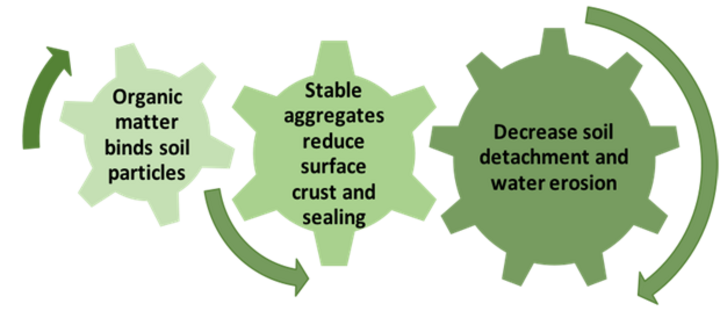
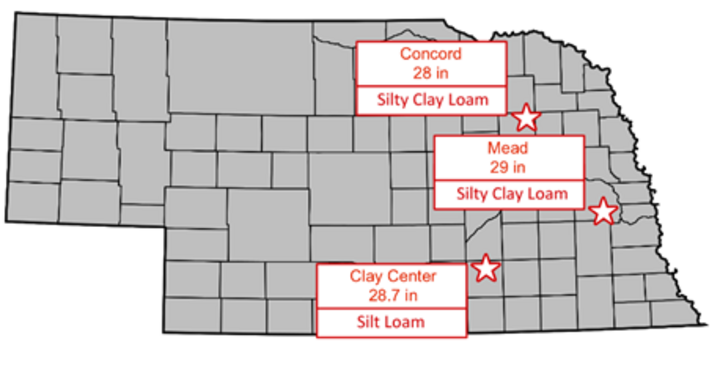
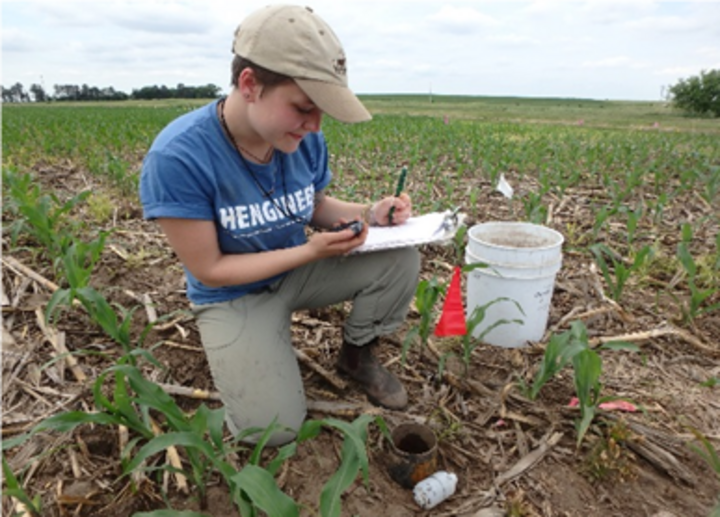
For example, late harvest of cash crops and fall rains may result in late fall cover crop planting, leading to low cover crop biomass production. High biomass production is critical for providing an effective surface cover against raindrop impact and soil detachment. One strategy to increase cover crop growing time and potential biomass yield and surface cover is to interseed cover crops into standing crops in early fall.
Case Study From Nebraska: How Do Early And Late Planting of Cover Crops Affect Soil Erosion?
We assessed how pre- and post-harvest planted cover crops affect soil erodibility after four years of management at three university research sites in Nebraska (Figure 3): near Concord, Mead, and Clay Center. The sites were managed under no-till continuous corn and corn-soybean rotations (Figures 3 and 4). Treatments were:
- broadcast pre-harvest (one month prior to harvest)
- drilled post-cash crop harvest and
- no cover crop.
The cover crop types planted were cereal rye and a mix of cereal rye, winter pea, hairy vetch, and radish.
Our Findings
Planting date and cover crop type had no effect on initial water infiltration and soil organic carbon.
- Pre-harvest cover crop planting increased total particulate organic matter compared to post-harvest cover crop planting at the Concord site.
- Cover crops also tended to increase total particulate organic matter at the other two sites.
- Pre-harvest cover crop planting increased mean weight diameter of water-stable aggregates under continuous corn at Mead (Figure 5).
- At the other sites, pre-harvest planting and cover crops tended to increase mean weight diameter. On average, pre-harvest cover crop planting increased mean weight diameter of water stable aggregates by 18% compared to post-harvest planting (Figure 5).
- Cover crops significantly increased mean weight diameter of water stable aggregates at the Concord site.
What Do These Results Mean for Managing Water Erosion in Eastern Nebraska?
- Mean weight diameter of water-stable aggregates is an indicator of water erosion potential. As wet soil aggregate size increases, the risk for water erosion decreases (Barthès, 2002).
- The increased amount of water-stable aggregates with pre-harvest planting suggests that this cover crop management practice can reduce erosion risk more than post-harvest planting. This can be due to the greater biomass production with early planting of cover crops.
- The increase in particulate organic matter, particularly with pre-harvest planted cover crops, can contribute to soil particle binding and thus aggregation, leading to reduced soil erodibility.
- The small effects of cover crops and planting dates on soil properties may be due to the short-term nature of this study (four years) as well as the low aboveground biomass yield (less than 1 ton/acre).
What This Means for Cover Crop Management
Using cover crops, and more specifically interseeding cover crops into standing crops, in general, can improve soil properties, reducing the risk of soil erosion from water. We expect that the soil benefits of cover crops may be greater in the long term (more than four years).
References
Barthès, B., and Roose, E. (2002). Aggregate stability as an indicator of soil susceptibility to runoff and erosion; validation at several levels. Catena, 47(2), 133-149. doi:10.1016/s0341-8162(01)0018.
Bingham, M., S. K. Sinha, and F. Lupi, “Economic Benefits of Reducing Harmful Algal Blooms in Lake Erie” Environmental Consulting & Technology, Inc., Report, 66 pp, October 2015.
Blanco-Canqui, H., Shaver, T. M., Lindquist, J. L., Shapiro, C. A., Elmore, R. W., Francis, C. A., and Hergert, G. W. (2015). Cover crops and ecosystem services: insights from studies in temperate soils. Agronomy Journal, 107(6), 2449. doi:10.2134/agronj15.0086
Nebraska Department of Environmental Quality Beach Watch
Pope, Joanna. “The REAL Cost of Soil Erosion.” Natural Resources Conservation Service (NRCS) Nebraska
NRCS Nebraska 2007
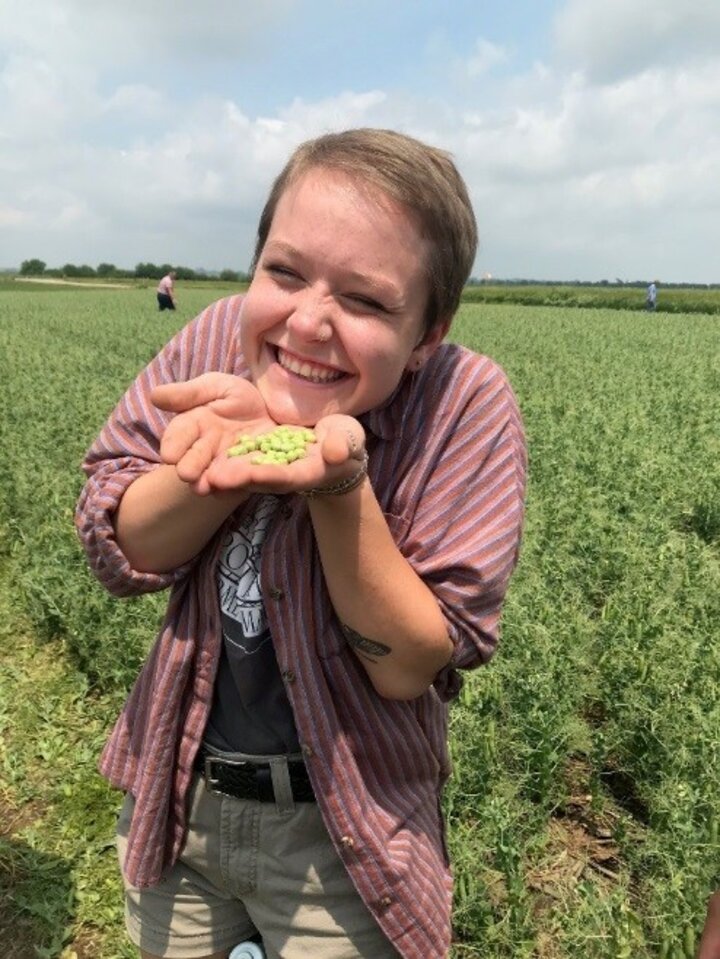
About the Author
Emma Richmond-Boudewyns is one of nine undergraduate students completing an Integrated Agronomic Systems Fellowship at the University of Nebraska-Lincoln in summer 2018.
Emma is attending the University of Delaware, majoring in Environmental Engineering and Agriculture and Natural Resources. After graduation, she plans to pursue her master’s degree focusing on sustainable international agriculture.
Support
This project was made possible by the USDA NIFA Agriculture and Food Research Initiative: Education and Literacy Initiative–Undergraduate Experiential Learning Fellowship Program and by the University of Nebraska-Lincoln Department of Agronomy.
